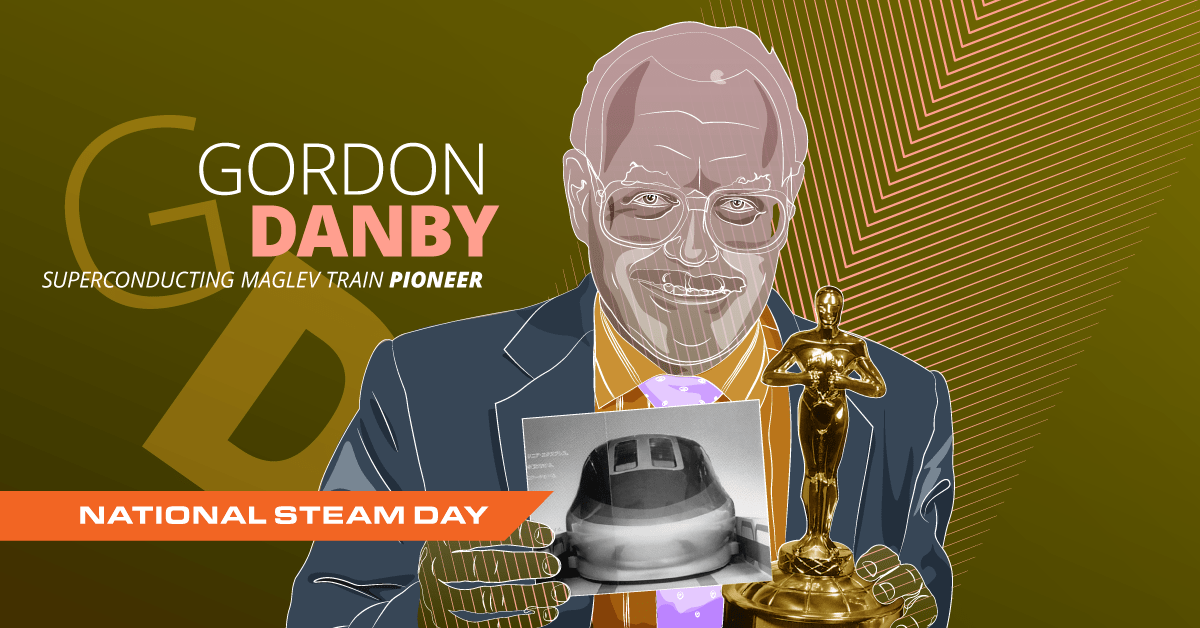Happy S.T.E.A.M. Day and Happy Birthday Dr. Gordon Danby!
The concepts involved in science, technology, engineering, arts, and mathematics (S.T.E.A.M.) are all around us, and learning about them happens naturally every day as children explore, play, and try new things. Encouraging curiosity and exploration helps children learn skills that will result in a lifetime of asking why, experimentation, and learning.
Dr. Gordon Danby was a young scientist at Brookhaven National Laboratory on Long Island in 1960 when a colleague and housemate, James R. Powell, after being stuck in traffic for five hours, asked why transportation couldn’t be different. They discussed the idea of a futuristic train without tracks or an engine, but with strong electromagnets that would keep the cars elevated and propel them, providing a very high-speed and nearly friction-free ride.
The concept of a maglev train had been around for half a century, but Dr. Danby and Dr. Powell proposed using superconducting magnets that would be powerful enough to levitate heavy passenger or freight train cars. Danby and Powell hold the original patent for the superconducting maglev.
Unfortunately, bureaucratic log jams stalled any forward progress on developing a system in the United States. However, Danby and Powell never stopped believing in the technology and promoting it. Officials from Japan and Germany met with the two scientists early on and both countries began development of the technology.
The Japanese superconducting maglev system is what Northeast Maglev is bringing to the United States, starting with connecting Washington, D.C., Thurgood Marshall Baltimore-Washington International Airport, and Baltimore.
Dr. Danby once took a trip to Japan to see the superconducting maglev train in action. “It was very nice,” he told The New York Times. “It went by with a whoosh.”
Dr. Danby later designed superconducting electromagnets for magnetic resonance imaging (MRI) machines. His work led to faster, open MRI machines that are more patient-friendly and less costly.
In 2000, Drs. Danby and Powell were recipients of a Benjamin Franklin Medal for their invention of the superconducting maglev.
On this National S.T.E.M./S.T.E.A.M. Day, we celebrate Dr. Gordon Danby, his ideas, achievements, and all that he did to advance the superconducting maglev system.
To celebrate, we went back to school! We enjoyed spending time with several groups of middle school students throughout the region, talking about magnetism, the superconducting maglev, and the S.T.E.A.M. career opportunities involved with bringing the train to the United States. We think Dr. Danby would have been proud to see how excited these young women and men were to learn about the advanced train system that he envisioned.
Now more than ever, we need your help to make the project a reality. Be sure to sign our petition, and write letters to your legislators. Keep track of what we’re up to by following us on Facebook, Instagram and Twitter.
